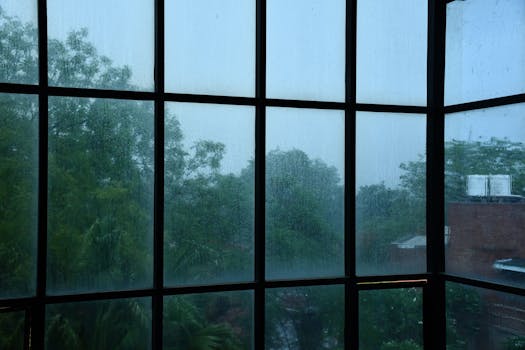
Delhi Swelters: Monsoon Delay Sparks Heatwave, Humidity Crisis – When Will the Rains Arrive?
Delhi, the bustling capital of India, is currently grappling with a prolonged heatwave and oppressive humidity, as the eagerly awaited monsoon continues to delay its arrival. The city, usually relieved by the monsoon's life-giving rains by late June or early July, is experiencing soaring temperatures and stifling conditions, raising concerns about public health and impacting daily life. This unprecedented delay is prompting questions about the changing weather patterns and the impact of climate change on the region's monsoon cycle.
The Unbearable Heat and Humidity: A Delhi Summer Nightmare
The combination of high temperatures and unrelenting humidity is making life incredibly difficult for Delhi residents. The heat index, which combines temperature and humidity to reflect how hot it actually feels, has been consistently above 40°C (104°F) in many areas, leading to heat exhaustion and heatstroke cases. Hospitals are reporting a surge in patients suffering from heat-related illnesses.
- Increased Heatstroke Cases: Medical professionals are warning residents to take precautions, including staying hydrated, limiting outdoor activities during peak hours, and wearing light-colored, loose-fitting clothing.
- Disruption to Daily Life: The extreme weather is disrupting daily routines, with many people finding it difficult to commute or work outdoors. Construction work is slowing down, and outdoor events are being postponed.
- Power Outages: The increased demand for electricity due to extensive use of air conditioners and fans is putting a strain on the power grid, leading to occasional power outages, adding to the discomfort.
- Air Quality Concerns: While the monsoon usually helps improve air quality, its delay means the air quality remains poor in many parts of Delhi, further exacerbating the health risks.
Why is the Monsoon Late in Delhi? Understanding the Delay
The delay in the arrival of the monsoon in Delhi is a complex issue with multiple contributing factors. While predicting the exact timing of the monsoon is challenging, experts point to several potential reasons:
- Climate Change: Climate change is altering weather patterns globally, and its impact on the Indian monsoon is increasingly evident. Changes in sea surface temperatures, atmospheric circulation patterns, and the El Niño-Southern Oscillation (ENSO) are all implicated.
- La Niña Influence: The recent La Niña event, characterized by cooler-than-average sea surface temperatures in the central and eastern tropical Pacific Ocean, can disrupt monsoon patterns and lead to delays.
- Weak Western Disturbances: Western Disturbances, which are weather systems originating over the Mediterranean Sea and impacting the Indian subcontinent, play a crucial role in the monsoon's onset. Weak Western Disturbances can delay the advancement of the monsoon.
- Delayed Cyclone Formation: Cyclones can influence the monsoon's progression, and a delay in their formation can contribute to the monsoon's late arrival.
Impact on Agriculture and Water Resources
The delayed monsoon poses serious challenges for agriculture in Delhi and surrounding regions. Farmers rely on timely rains for planting and crop growth. A prolonged delay can lead to crop failure and reduced yields, potentially impacting food security and farmer livelihoods. Water levels in reservoirs and groundwater resources are also affected. Delhi's already strained water resources will face further pressure with a delayed monsoon.
What Lies Ahead: Forecasts and Preparations
The India Meteorological Department (IMD) continues to closely monitor the monsoon's progress and issue regular updates. While precise predictions remain difficult, forecasts suggest the monsoon may arrive in Delhi within the next few days or weeks. However, even if it arrives, there's no guarantee that it will provide adequate rainfall to compensate for the delay.
The current situation highlights the need for better preparedness to face the challenges of climate change and its impact on the monsoon. This includes:
- Improved Water Management: Efficient water management practices, including rainwater harvesting and water conservation, are crucial.
- Early Warning Systems: Strengthening early warning systems to provide timely information on heatwaves and other weather extremes.
- Climate Change Adaptation: Implementing adaptation strategies to cope with the increasing frequency and intensity of extreme weather events.
- Public Awareness Campaigns: Educating the public on heat safety measures and promoting responsible water usage.
The situation in Delhi underscores the urgent need to address climate change and its impact on vital resources like water and agriculture. The ongoing delay in the monsoon serves as a stark reminder of the challenges ahead and the importance of collective action to mitigate the effects of climate change. The residents of Delhi anxiously await the life-giving rains, while continuing to navigate the sweltering heat and humidity. The coming weeks will be crucial in determining the extent of the damage caused by this unprecedented delay and the impact on the lives of millions. The focus now shifts towards effective mitigation strategies and a proactive approach to face future monsoon uncertainties.




















